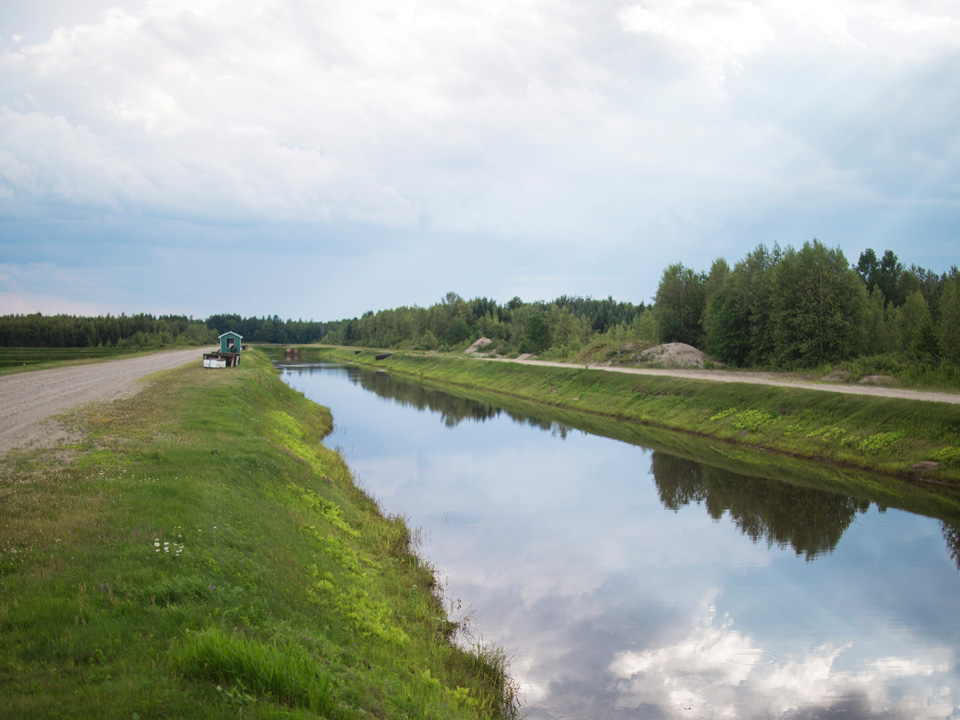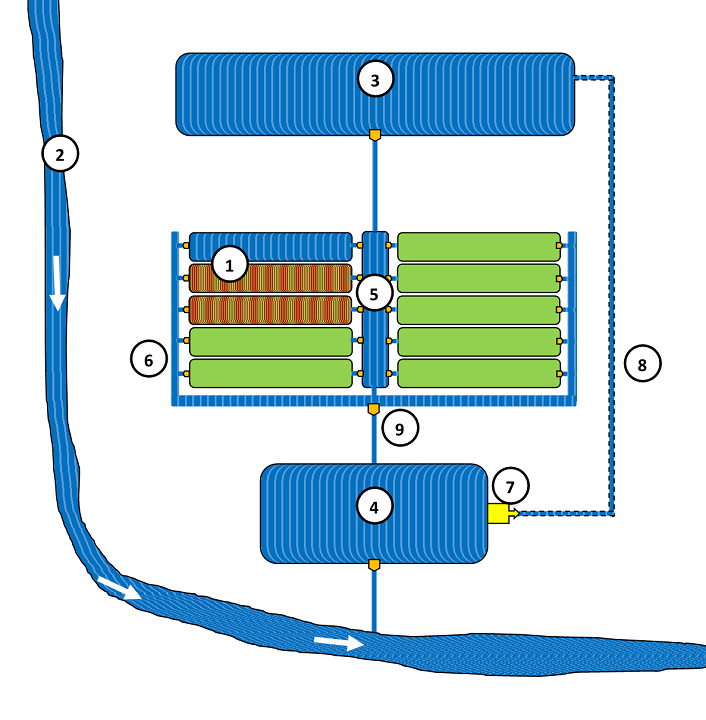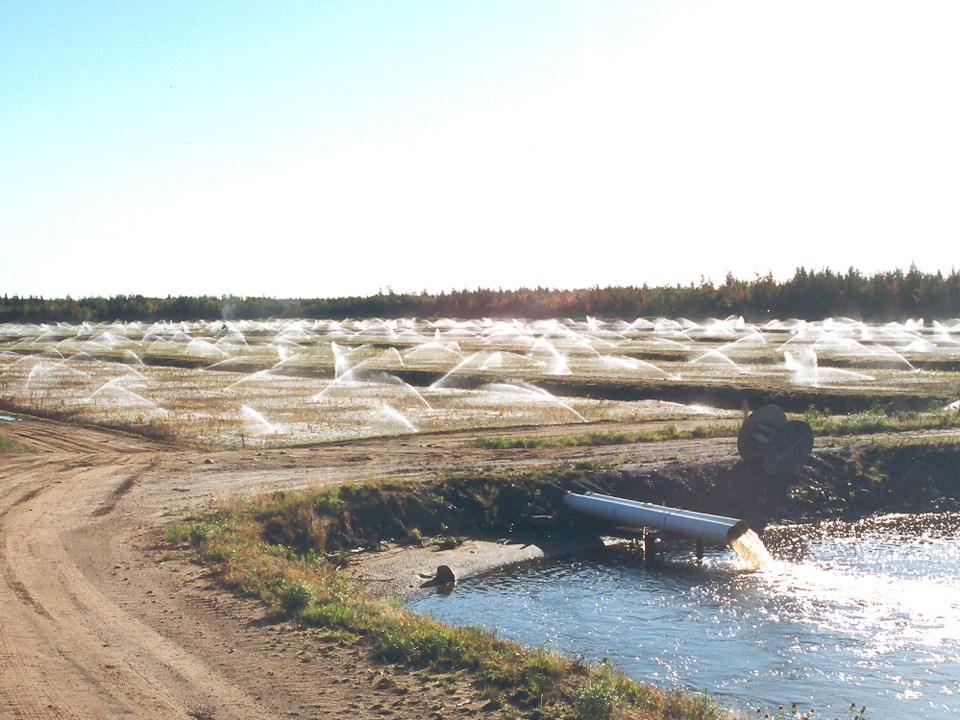
Growing Cranberries

Water Management
Optimal Water Usage
Important scientific research led by Dr. Jean Caron of the CRNG-Hortau Industrial Research Chair for Precision Irrigation at Laval University has shown that cranberry irrigation and drainage can have a significant impact on crop yields and water usage. Thus, we calculate soil moisture levels with the help of tensiometers in the goal of giving the plant only the amount of water it truly requires. This practice allows for a reduction of up to six times the quantity of water used in the past. In addition, this optimal water usage offered results of up to 30% increase in crop yields.
The water reservoir or lake is the first infrastructure to be built when preparing cranberry bogs because it allows rainwater and snow runoff to be captured to meet the farm’s future needs. The vast majority of cranberry farms function with a closed-circuit water system allowing water to be recycled and reused year after year. Working by gravity, the water circulates via a system of canals and is then emptied from one bog to another during the harvest period. Other than this period where the bogs are flooded, water is used prudently in our growing practices.
 Closed-circuit water plan
Closed-circuit water plan
Closed-circuit water distribution system key
1. Bogs: during the flooding period, water passes from one bog to another. Not all fields are flooded at the same time.
2. Watercway
3. Reservoir where water is stored and recycled
4. Collection reservoir where water is collected, stored and recycled
5. Central canal
6. Adjacent canal
7. Pumping station
8. Transfer conduit between the main water recovery canal and the back-up supply
9. Water control

Cranberries do not grow in water
Water is necessary to protect plants from frost in the spring and fall as well as to irrigate during the course of the summer. In fact, cranberries do not require more water than grass. Bogs need only be irrigated to maintain optimal moisture levels and prevent overheating. Once winter comes with temperatures (-10 °C) fields are flooded once again to create a layer of ice over the plants and protect them from periods of freezing and thawing, this practice is known as ‘glaciation’.
